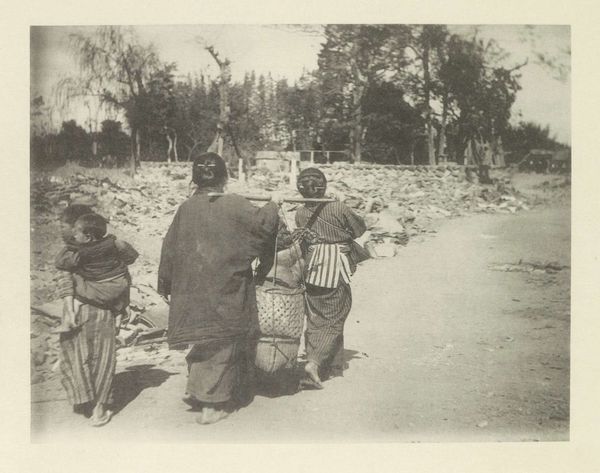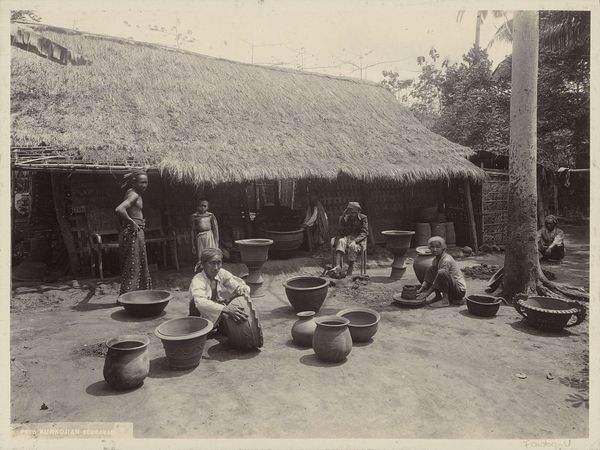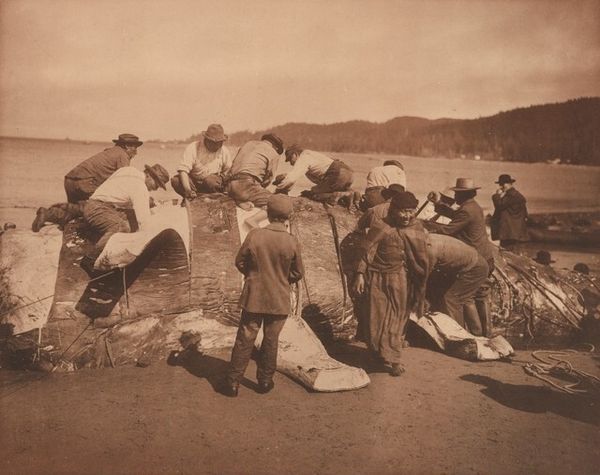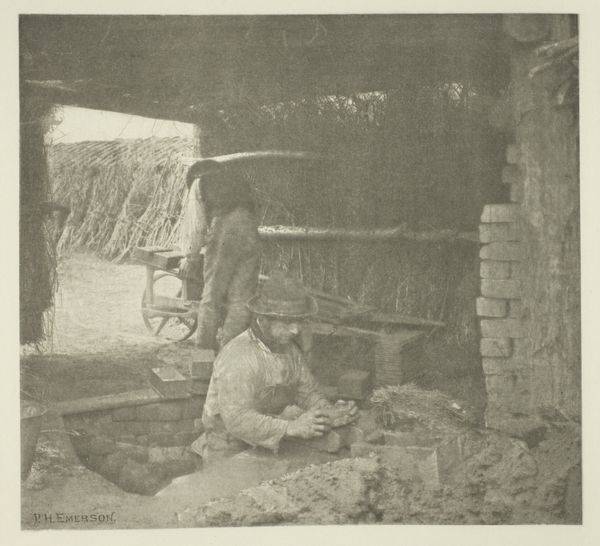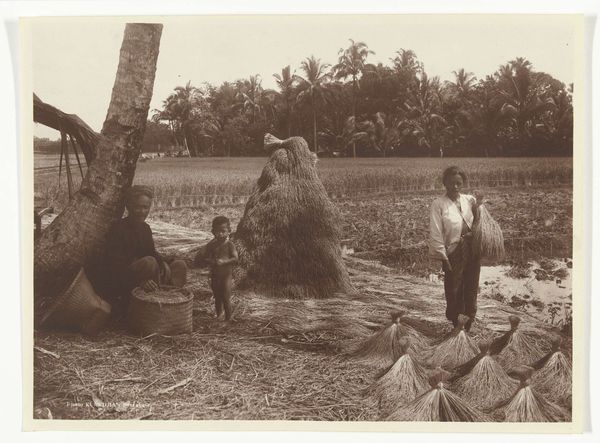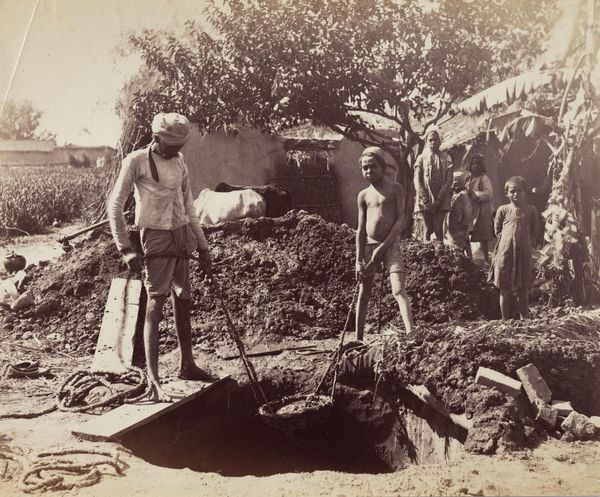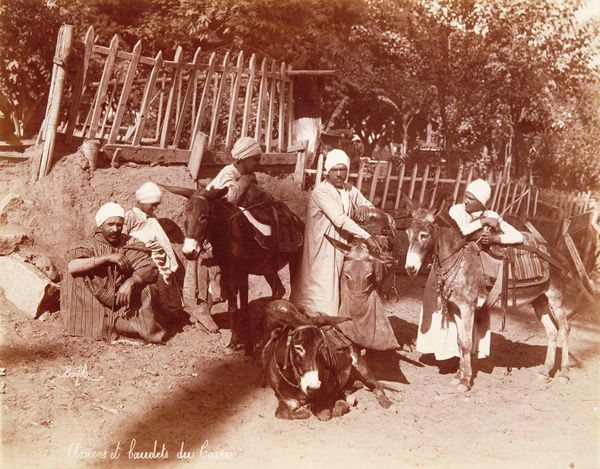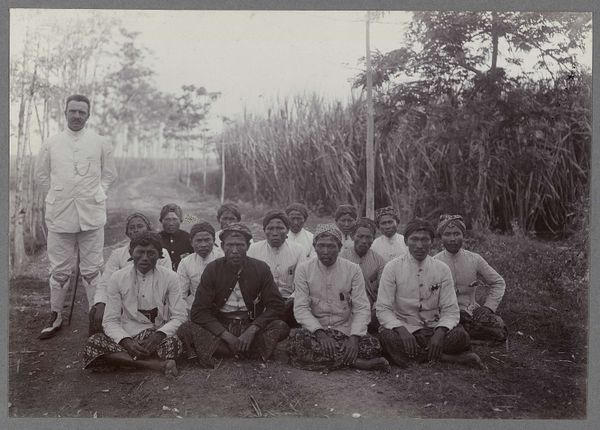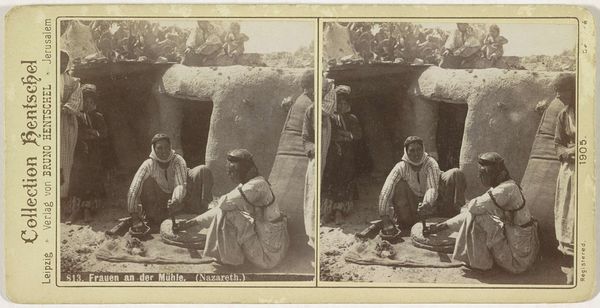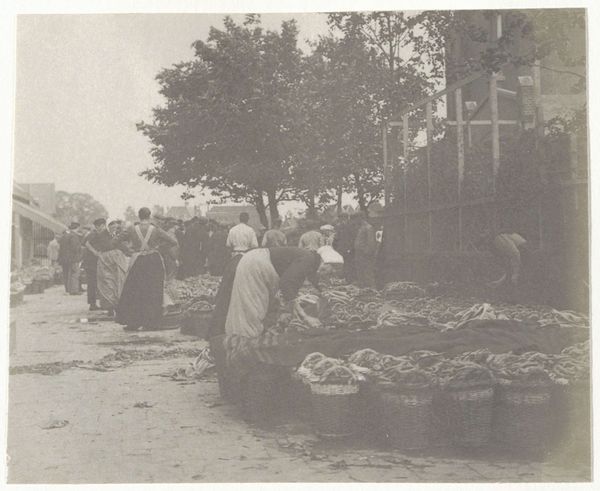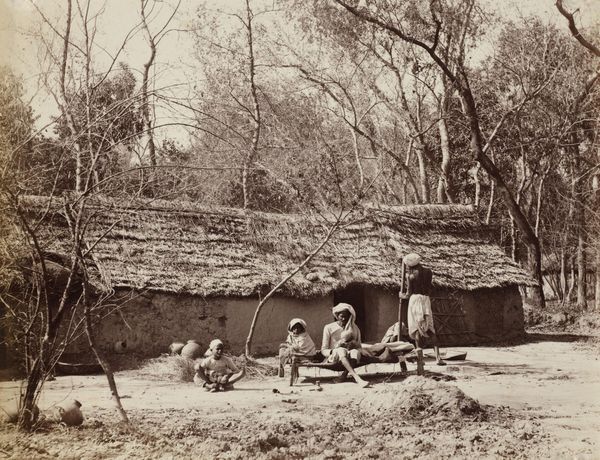
Dimensions: height 177 mm, width 237 mm
Copyright: Rijks Museum: Open Domain
Curator: Oh, I love how this image whispers a story, doesn't it? "Vrouwen en man met uitgestalde groenten langs de kant van de weg"—"Women and man with displayed vegetables by the roadside," taken by Onnes Kurkdjian around 1912. There's a quiet drama, like a freeze-frame from a play. Editor: Absolutely. My immediate reaction is one of stark contrast. The muted tones create a somber atmosphere, yet there's an undeniable vibrancy in the composition, in the careful arrangement of figures and the produce laid before them. It speaks to the duality of existence, of labor and life intertwining. Curator: Precisely. It’s a little portal back in time, isn't it? I see a beautiful depiction of everyday life and survival. I mean, it's so still and posed, but somehow incredibly full of energy... that energy of people working together and bartering, under those huge hats that catch the light. Editor: Indeed. The figures, particularly the man standing with the oversized hat, dominate the frame. He embodies a certain… presence, or perhaps it is a posture of forced submission. The lens and therefore, the viewer, is positioned to immediately establish a racial, gendered, and classed gaze that centers Western ideals and values. It encourages us to examine who is looking at whom, and under what socio-political circumstances. Curator: You know, the light and shadows do some interesting work. There’s such texture in those woven goods and even in the road itself... and then the eyes that are looking directly at us... there is a kind of vulnerability. Editor: And perhaps also defiance, depending on how we choose to read it. This photograph encapsulates a moment in the historical encounter between the West and other cultures. It's vital to address the unequal power dynamics at play, because photographs, no matter how innocuous they may appear, always participate in broader systems of representation and knowledge production. Curator: Yes! There’s also that lovely haze… a painterly, dreamy feel. I think I would almost call it post-impressionistic because it is playing with capturing fleeting impressions. I can almost smell the earth and those vegetables. Editor: True. And beyond its artistic merit, it serves as a powerful historical document. It forces us to grapple with complex issues of representation, of power, and of the enduring legacy of colonialism. It can also give insight to cultural and economical arrangements that prevailed during this period in Southeast Asia. Curator: So, what is your biggest take away in one word? For me it’s 'quietness'. It offers the calmness before a busy day in the lives of the subjects. Editor: For me it's 'scrutiny', the act of analyzing history's weight through a focused perspective that challenges dominant narratives.
Comments
No comments
Be the first to comment and join the conversation on the ultimate creative platform.
